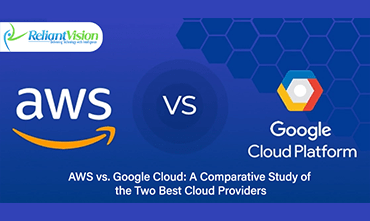Amazon Web Services (AWS) is the leading public cloud supplier by a mile. Before going all-in and picking the market chief, make sure to investigate Google Cloud Platform and play out a Google Cloud versus AWS examination. You might be shocked to find that Google Cloud offers numerous benefits over AWS and may better match the necessities of your business.
To help you track down the best cloud supplier to suit your necessities, we’ve looked at Google Cloud versus AWS and recognized a portion of the qualities and shortcomings of both cloud stages.
Google Cloud versus AWS: Pricing
Organizations are continually searching for freedoms to reduce expenses, and distributed computing is one region where critical investment funds can be made—although it’s hard to lead a significant Google Cloud versus AWS investigation on evaluating alone. Google Cloud Platform offers equivalent center distributed computing answers for AWS, albeit the administrations offered by each of them are not indistinguishable. Likewise, regular dispatch of new administrations invokes a continuous value war and incessant value cuts by Google Cloud and AWS. A value examination today could well be outdated tomorrow.
Through the Google Cloud Platform Committed Use and Sustained Use Discount programs, AWS can have substantial value benefits for particular process administrations. After all the considerations, Google Cloud highly esteems giving lower costs than its rivals. Undoubtedly, Google Cloud’s Sustained Use Discount program contrasts well and AWS’ On-Demand costs.
Google Cloud’s Sustained Use Discounts give value decreases the more one uses a Virtual Machine every month, beginning from one month of utilization. With the limits on offer, Google Cloud’s Virtual Machines are less expensive than AWS for utilization cases. There are no forthright expenses to accomplish the limits and no compelling reason to hold an occurrence for one or three years, similar to the case with AWS.
For associations with a lot of information to store or examine, Google Cloud’s stockpiling costs are up to 20% less expensive than AWS (except for file stockpiling). The cost of data set administrations likewise looks at well. While there’s no distinction in the price of compartment administrations, Google Cloud is an industry chief in the field and is additionally putting intensely into AI, and Machine Learning advances.
Google Cloud versus AWS: Features and administrations
There are cost benefits to utilizing Google Cloud over AWS; however, the expense is vital for the story. There’s no point picking a cloud stage that offers a tremendous expense advantage on the off chance that it comes up short on the adaptability, unwavering quality, and level of execution to address the issues of the business.
Google Cloud offers around 95 unique administrations, while AWS offers more than 200. A considerable lot of different administrations are significant for huge ventures with exclusive necessities for their cloud surroundings, even though Google Cloud provides a center scope of administrations that address the issues of most organizations.
Google Cloud indeed enjoys a benefit as far as adaptability, with far more noteworthy freedoms for customization of figure occurrences than AWS, which offers restricted freedoms for customization. Every stage presents predefined occasions to address the issues of most organizations. However, with the Google Cloud Platform, if register needs don’t coordinate the predefined examples, it’s feasible to make custom VMs try not to pay for the limit that is not needed.
Google Cloud versus AWS: Global reach
While Google Cloud Platform beats AWS on cost and adaptability, AWS scores better as far as worldwide reach is concerned, giving more server farms altogether throughout the planet. As of September 2020, Google Cloud Platform had 24 locales, 73 zones, and over 100 places of the essence in 35 nations. AWS has 24 areas, 77 accessibility zones, two nearby locations, and clients in 245 countries and regions. Further, AWS is adding new server farms at a quicker rate than Google.
This implies that AWS might be a better decision, particularly outside of the United States and Europe. More locales and more noteworthy accessibility additionally mean organizations that pick AWS might have the option to arrange assets all the more quickly—even though few out of every odd one of AWS’s administrations are accessible in each area.
Google Cloud versus AWS: Free levels
Both AWS and Google Cloud offer complimentary plans to urge organizations to attempt various administrations. AWS splits its complementary plan advancements between chose administrations for 30-day, year, and consistently free periods, subject as far as possible. By correlation, Google Cloud keeps it straightforward by unfailingly offering complementary plans on 24 items and administrations—likewise subject as far as possible.
While a significant number of the administrations and utilization limits are comparable between the two suppliers, Google Cloud likewise offers new clients $300 in credit to use on any help in its portfolio. Although $300 won’t be a significant sum for an enormous undertaking, considering the overall benefits of the two Cloud Service Providers, the offer gives potential clients greater adaptability in the administrations of the platforms they attempt.
Which is Better, Google Cloud, or AWS?
There’s no absolute champ regarding Google Cloud versus AWS, as each cloud stage has its upsides and downsides. AWS may be an ideal decision for enormous ventures with explicit prerequisites, for worldwide organizations with a presence in many nations, and organizations outside of the United States and Europe. AWS likewise offers great degrees of help, accessibility, and more substantial excess.
Google Cloud offers more prominent adaptability, and speed wins On-Demand valuing. It gives a scope of items and administrations that address the issues of most organizations with an exceptionally liberal, consistently complementary plan.
It’s not easy to pick either. You can exploit the advantages of AWS, Google Cloud, and Azure by embracing a multi-cloud technique. That way, you can establish a cloud climate that precisely coordinates with the requirements of your business and can pick the most valuable assets from each cloud supplier.
The study, in conclusion, can be summed up in the following table:


